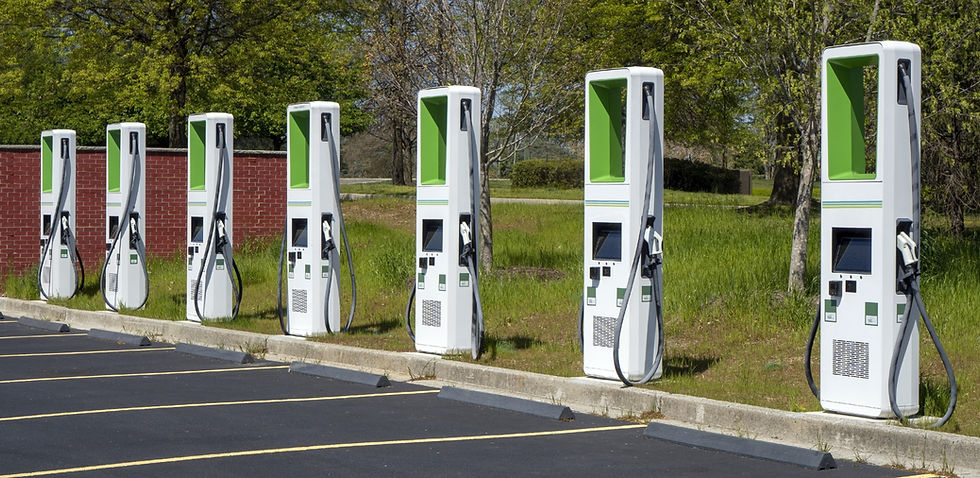Charging Ahead: The Financial Landscape of EV Charging Infrastructure in India
- Adarsh Raj
- Jan 30
- 3 min read
Updated: Jan 31

As India accelerates its transition to electric mobility, the establishment of a robust EV charging infrastructure is crucial. With the government’s ambitious target of having 30% of all vehicles on the road be electric by 2030, the demand for charging stations is set to soar. However, the financial implications of building and maintaining this infrastructure can be daunting for businesses and investors. In this blog, we will explore the financial landscape of EV charging infrastructure in India and the various financing options available.
The Importance of EV Charging Infrastructure
A well-developed charging infrastructure is essential for the widespread adoption of electric vehicles (EVs) in India. Here’s why:
Consumer Confidence: A robust network of charging stations alleviates range anxiety among potential EV buyers, encouraging more consumers to make the switch to electric.
Support for Fleet Operators: Businesses operating electric fleets require reliable charging solutions to ensure operational efficiency and minimize downtime.
Government Mandates: With increasing regulatory pressure to reduce emissions, businesses must invest in EV infrastructure to comply with government policies.
Financial Challenges in Establishing Charging Infrastructure
While the need for charging infrastructure is clear, several financial challenges must be addressed:
High Initial Investment: The cost of purchasing and installing charging stations can be significant, especially for businesses looking to establish a widespread network.
Operational Costs: Ongoing maintenance, electricity costs, and potential upgrades to charging technology can add to the financial burden.
Uncertain Revenue Streams: The profitability of charging stations can be unpredictable, particularly in the early stages of EV adoption.
Government Initiatives and Incentives
The Indian government recognizes the importance of charging infrastructure and has introduced several initiatives to support its development:
FAME India Scheme: The Faster Adoption and Manufacturing of Hybrid and Electric Vehicles (FAME) scheme provides financial incentives for the establishment of EV charging stations. Under this scheme, the government offers subsidies to private players for setting up charging infrastructure.
State-Level Policies: Various states, such as Delhi, Maharashtra, and Gujarat, have introduced their own policies and incentives to promote the installation of charging stations, including subsidies, tax exemptions, and streamlined approval processes.

National Electric Mobility Mission Plan (NEMMP): This initiative aims to create a comprehensive framework for the adoption of electric vehicles and the necessary infrastructure, including charging stations.
Financing Options for EV Charging Infrastructure
1. Public-Private Partnerships (PPPs)
Collaborating with government entities through public-private partnerships can help share the costs of developing charging infrastructure. These partnerships can facilitate the installation of charging stations in public areas, making it easier for businesses to transition to electric mobility.
2. Green Financing
Many banks and financial institutions in India offer green loans specifically designed for financing sustainable projects, including EV charging infrastructure. These loans often come with lower interest rates and favorable terms for businesses committed to environmental sustainability.
3. Crowdfunding and Community Investment
Crowdfunding platforms are emerging as a viable option for financing EV charging initiatives. Businesses can engage their communities and potential customers to invest in their charging infrastructure projects, fostering brand loyalty and community support.
4. Corporate Social Responsibility (CSR) Initiatives
Many companies are leveraging their CSR budgets to invest in sustainable transportation solutions. By aligning charging infrastructure investments with CSR goals, businesses can access additional funding while contributing to environmental sustainability.
5. Government Grants and Subsidies
In addition to the FAME India Scheme, various state governments offer grants and subsidies to encourage the establishment of charging stations. Businesses should actively seek out these opportunities to reduce their financial burden.
Conclusion
The establishment of a robust EV charging infrastructure is vital for the success of electric mobility in India. While the financial challenges are significant, various government initiatives, financing options, and innovative funding models can help businesses navigate this landscape. From leveraging FAME India Scheme subsidies to exploring green financing and public-private partnerships, there are numerous pathways to make EV charging infrastructure financially viable.
At EVrisefinance, we are dedicated to helping Indian businesses understand and leverage the financial opportunities available for EV charging infrastructure. Our team of experts can provide tailored solutions to meet your specific needs, ensuring that your investment in charging infrastructure is both financially viable and aligned with India’s sustainability goals.
Ready to take the next step? Contact us today to learn more about how we can help you fund your EV charging infrastructure and contribute to a greener future!




Comments